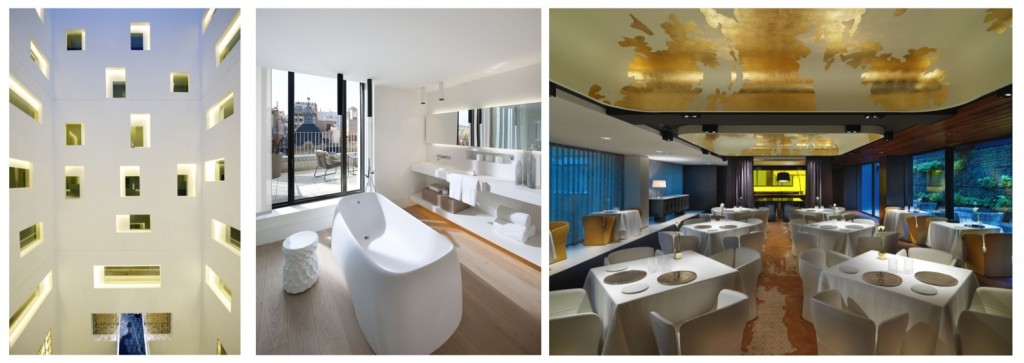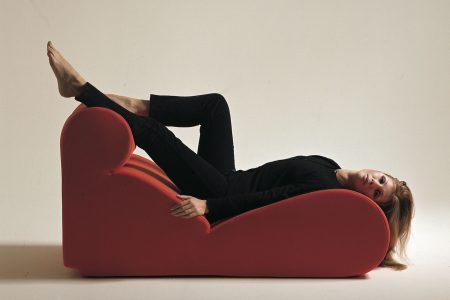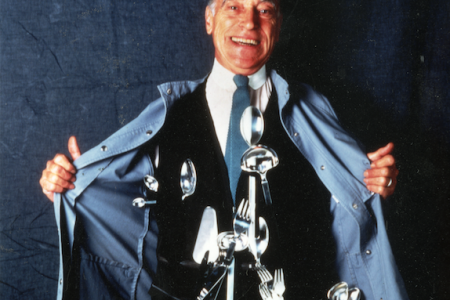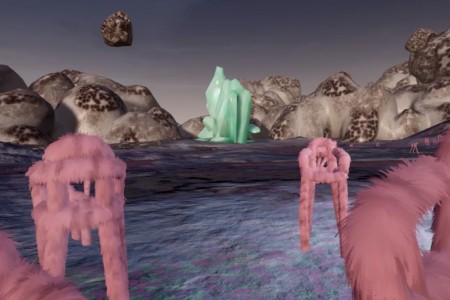Oriental Charm/ Eastern Promise in Barcelona
Text by Guy Dittrich/
Spanish-born product designer Patricia Urquiola’s first foray into hotel design comes at the recently opened Mandarin Oriental Hotel in Barcelona. Continuity and quality are the keys to the success of her design that incorporates a luxurious blend of materials and volumes that gel subtle Asian design cues with a European aesthetic.
Possibly better known to readers of TL magazine as an established product designer, the unassuming but confident Patricia Urquiola has taken to designing the volumes in which objects sit with her first hotel design for the luxury hotel brand, Mandarin Oriental in Barcelona. “Where people live is as important as the objects within them,” she enthuses of the project, the last suite of which was completed in summer 2010.
Urquiola is a qualified architect for whom, she tells TL in her high-speed staccato delivery, design is nevertheless her first love. Having designed the showrooms or trade show display spaces for various of her clients such as B&B Italia, Morosso and Flos, she is not stranger to working with volumes. “Personally, I see no discontinuity in my work on the hotel (from my product design),” she explains, “What was new for me at the Mandarin Oriental Hotel in Barcelona was the scale and complexity of the project.” Urquiola was totally responsible for the interior design of the 98 guest rooms and all the public spaces including a bar, two restaurants, a roof terrace plus a spa. The conversion of the 1955 bank headquarters presented another challenge with few of the guestrooms having similar layouts. No less than fifteen different carpet typologies in wool and silk were required, the largest single piece being 100mô. Manufactured by Tai Ping, the carpets are amongst the most luxurious upon which you will ever walk.
Entering the hotel from the busy Passeig de Gràcia, Barcelona’s boulevard of quality shopping and extraordinary Gaudi exhibitionism, the severe and sturdy portals of the bank’s limestone façade give little hint of the delicate and detailed design inside. First however, guests are faced with a sumptuous carpeted catwalk ramp through the centre of a deep courtyard around which the guest rooms are located. A better sense of arrival would be difficult to achieve. The discreet lobby overlooks to the rear the vast volume of Blanc Restaurant that is fed with bright light from the vaulted opaque skylights in the centre of the Mimosa Garden terrace above. Either side of Blanc are the Banker’s Bar and Moments, a gourmet restaurant. The pale green and beige tones of the interiors accented with sophisticated touches of burnished metals are as calming as they are luxurious.
The Mandarin Oriental Hotel Group was founded in Hong Kong in the mid-1980’s with the rationalisation of the management of two jointly-owned, legendary hotels, The Mandarin in Hong Kong and The Oriental, Bangkok. Asia is at the core of the brand. Particularly the anticipatory service ethic that is sustainable only with exemplary staff training. However it is also the skill at blending a sense of place in each hotel without ignoring the group’s oriental heritage that is most intriguing. As with the Mandarin Oriental Hotel in Prague that, like Barcelona, was effectively a totally new hotel within a very historic building, there was some public anticipation that the Barcelona hotel could be a kitsch interpretation of the Asian design vernacular.
“The Asian angle to the interior design of our properties in Europe is subservient to the sense of place,” explains Javier Hortal, project leader for Mandarin Oriental developments in EMEA, “Our guests are sophisticated and we don’t believe that we need to enforce this sense of Asia too much.” Indeed as Urquiola found out there were no brand design standards to which she had to adhere. “I was given the maximum freedom to deliver the maximum quality,” she clarifies, emphasizing the open dialogue with the group’s development team and the free hand given to her by Maria Reig, the owner of the Barcelona property. (Mandarin Oriental manages but does not own the hotel.) A freedom that has allowed Urquiola to develop a number of product designs specifically for the hotel including beautiful door handles with Olivari, a new curvaceous Corian washbasin with Agape and even tableware with Rosenthal.
Urquiola’s involvement in the Barcelona hotel subtly delivers both Hortal’s feeling for the location and the oriental references. The interpretation of the local tends towards a more European than Catalan or Spanish sense of design. The series of courtyards around which the hotel is structured are strongly identifiable with Europe sees Milan-based Urquiola. “I hope that there is a real sense of continuity and an elegance in the solutions I have found for (architect) Carlos Ferrater’s building,” she opinions referring to the linking role played by the courtyards between the hotel and the city. In addition to the dramatic entrance courtyard, the view from rear-facing guestrooms over the Mimosa Garden is one of in-your-face European domesticity. A school basketball court and laundry drying on the neighbours’ balconies are just part of the urbanism of the Catalan capital. American guests allegedly prefer this more prosaic view.
“Blanc restaurant is absolutely European,” states Urquiola, “it has my kind of ambiance with a mix of traditional and modern elements that could have been there always.” She is referring to the antique French ironing table from the early 1900’s, where afternoon tea and breakfast are served, and of course to the healthy dose of her own contemporary furnishings. Some like Fat-Fat, the chunky side table by B&B Italia and various armchairs were either special editions or custom made by Urquiola for the hotel. In the Banker’s Bar there is no doubt about local authenticity with the steel doors of the bank’s security deposit boxes, complete with keys, used to line the walls and ceilings.
“Barcelona is a city known for its design heritage. One where design defines its character,” states Hortal. He continues, explaining that the emphasis on design within the hotel, especially the quality of the contemporary European furniture design by Urquiola, clearly serves to enhance the hotel’s connection with the city.
The oriental design cues are also veiled. The intricacies of the floral patterning in the carpets, the beautiful lacquered trays used for presentation and the custom-fitted leather boxes for various of the in-room amenities. Such attention to detail is typical of Asian design. The references to screening are another Asian design facet that binds Urquiola’s interiors. “I tried to think of an element but not use it in an obvious way,” she explains of the screening idea.
The vast volume of Blanc achieves a beautiful balance of intimacy and spaciousness with the criss-cross hatching of a pressed-metal “curtain” suspended from the ceiling. The patterns of the shadows it throws are reminiscent of trencadis, a ceramic collage technique that is a feature of Catalan Art Nouveau. Lobbies on each floor display furnishings and oriental vases partially hidden behind sheer curtaining. There is the patterned grid at the windows overlooking the entrance lobby and metallic drapes in the spa. “In the guestrooms, I introduced a “deformed” wall that is a memory of a paravant,” Urquiola continues, of the decorative angular panels of such walls that are also seen in the fixed glass display panels in front of the lifts.
There are other cultural crossovers in the hotel. The Asian cuisine of Blanc is balanced by the neo-traditional Catalan food served by Michelin-starred chef, Carme Ruscalleda and her son Raül Balam in the Moments Restaurant. The range of products used in the spa’s treatments has been especially developed with Aromatherapy Associates in the UK together with experts in Traditional Chinese Medicine. Gardens have a special place in oriental cultures and throughout the hotel are several green spaces, the largest of which is the Mimosa Garden whose delicate trees are as much at home in Spain as Japan.
The Barcelona hotel is the fifth Mandarin Oriental hotel in Europe after London, Munich, Geneva and Prague. Mandarin are no strangers to working with renowned designers. Khuan Chew of KCA, London looked after the guest room design in Prague; Adam Tihany has recently re-done both restaurants in the London hotel including Dinner by Heston Blumenthal, the molecular chef. Another celebrated chef, Thierry Marx will be manning the stoves at the next European Mandarin Oriental to open in Paris in 2011. Here Patrick Jouin is looking after the design of the restaurants and bars whilst Sybille de Margerie will design the public spaces and guest rooms. Antonio Citterio is on the books to do the Milan property due to open in 2012. “Our design style is an evolution and varies from hotel to hotel,” describes Hortal, ”Our standards are not design-specific and we make sure that the subtle interpretation of Asian design is achieved in a way unique to each property.”
In discussing the Mandarin Oriental Hotel Barcelona, Urquiola refers often to continuity. The linkage between her work as a product designer and interior designer. Her efforts to ensure harmony within the architectural envelope. The combining force of her screen interpretations. But it is the consistency of quality that is her greatest achievement. As she states, “I am not interested in looks but (rather) quality. The only good look is quality.”
www.mandarinoriental.com
www.patriciaurquiola.com
(Text by Guy Dittrich/ Images courtesy of Design Hotels™)







